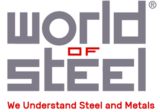Substrates for Prepainted Metal
Substrates for Prepainted Metal
Usually the main consideration in choosing a prepainted metal product is the nature of the coating. However, the underlying substrate is a fundamental part of the product. The first and most obvious distinction is what type of metal to use. Most prepainted metal uses either steel or aluminium, although other metals such as copper or zinc can be available with a coil coated surface too.
In both steel and aluminium, there are various grades available which can give either greater strength or improved formability, as well as variations in resistance to corrosion.
When using steel, most prepainted metal also uses a metallic coating on the steel to improve corrosion resistance. This is not always the case and for some applications where corrosion resistance is not critical (eg dry indoor applications) the paint coatings can be applied directly to untreated, cold reduced steel.
The most common metallic coating for steel is hot dip galvanising, which gives a thin zinc layer on the steel. This acts as a sacrificial corrosion protection layer, corroding slowly in preference to the steel. Some variations of the galvanising layer are also available, mostly using an alloy of zinc and aluminium, usually in the ratios 95:5 or 45:55 and sometimes with some addition of magnesium. These different metallic coatings can improve corrosion resistance further and can be particularly effective when used together with a paint coating in prepainted metal.
When using aluminium, the exact alloy can have a significant impact on the corrosion resistance, so it is wise to take advice on this early in the selection process. In the coil coating process, the steel or aluminium strip is efficiently cleaned and pre-treated which again helps to improve paint adhesion and corrosion resistance.
- Source: http://www.prepaintedmetal.eu
